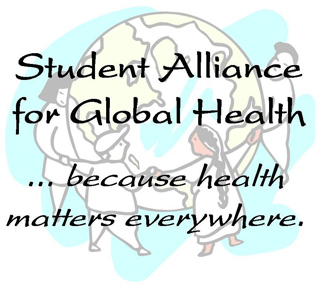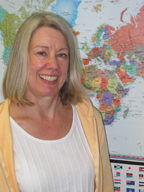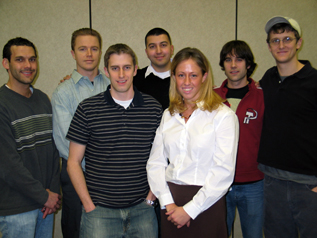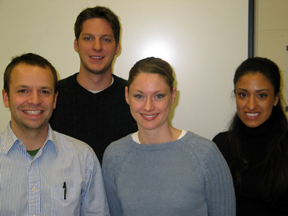 The Student Alliance for Global Health (SAGH) – the UNMC campus organization devoted to providing students and faculty opportunities in international medicine — has a record number medical mission teams visiting five countries during this month’s spring break.
The Student Alliance for Global Health (SAGH) – the UNMC campus organization devoted to providing students and faculty opportunities in international medicine — has a record number medical mission teams visiting five countries during this month’s spring break.
While thousands of American students spend their annual spring break relaxing in the sun, SAGH members bring badly needed medical services to some the hemisphere’s poorest and most underserved communities in Nicaragua, Jamaica., Guatemala, Costa Rica and the United States.
The 2006 missions will be based at clinics or hospitals in Falmouth, Jamaica; Managua, and San Marcos, Nicaragua; Osa Peninsula, Costa Rica; San Lucas, Guatemala; and the Sisseton Indian Health Service facility in South Dakota. The overseas mission teams bring medical supplies with them, including donated pharmaceutical drugs. All of the teams collected donated clothing and toys for pediatric patients.
 |
Sara Pirtle |
“There is a greatly expanded interest among UNMC students for this kind of opportunity,” said Sara Pirtle, coordinator, International Studies and Programs. “There are definitely more students coming to our campus with previous overseas experience, either educationally or as vacation travelers. They came out of high school already aware of the possibilities in international medicine.
“In addition, I don’t think we give contemporary students enough credit for just really wanting to serve humanity and make a difference in the lives of those less fortunate. A majority of our medical students are from Nebraska and there has always been a strong ethic of helping others in this state.”
 |
Members of the Nicaragua medical mission team include, first row, from left, Tim Larsen (M1), Cassie Cash (M2). Back row, from left: Dave Erickson (M2), Shawn Skaife (M2), Brian Tullius (M2), Tim Yates (M1) and Mark Hare (M1). |
Regardless of which mission students and faculty attend, they all return with a heightened sense of where their medical training can take them.
Last year, the Nicaragua mission team served more than 600 patients in six days, providing free vaccinations, fluoride treatments, Vitamin A and antiparasite pills, as well as basic care.
The Sisseton facility, built in 1936, is the primary source of medical care for more than 5,000 tribal members of the Lake Traverse Reservation, located in the extreme northeast corner of South Dakota. Team members shadowed physicians and physician assistants in the clinic, did overnight rotations in the emergency room, assisted in the on-site radiology and laboratory analysis departments, provided interactive anti-smoking presentations to three local tribal elementary school groups and accompanied tribal social workers on rounds through the community.
In Jamaica, the Falmouth clinic isn’t even open until international missions come throughout the year and provide full services. Team members will spend five days working in the clinic from 8 a.m. to 6 p.m., and see up to 500 patients, many suffering from chronic diseases such as diabetes and hypertension.
 |
Four members of the Jamaica medical mission include, from left, Jonathan Henning (M2), Casey Collier (M1), Alyssa Pilus (M2) and Sahra Niazi (M2). |
All of the students pay their own living expenses to make these mission trips. Whatever cash donations are collected, after purchasing medical supplies and sundries, is divided up among the mission team members to offer some minimal reimbursement of their personal costs. Cash donations continue to be accepted, even after the trips, because that money also is used to help defray those student’s personal costs.
For more information about the 2006 SAGH medical missions or to make a donation, contact Pirtle at 402-559-2429 or e-mail at spirtle@unmc.edu.